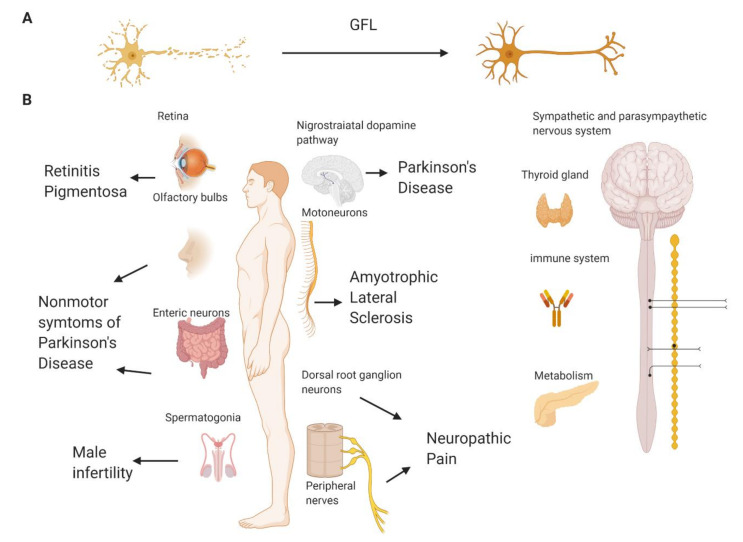Figure 1.
The biological effects of glial cell line-derived neurotrophic factor family ligands (GFLs) in the adult organism and potential pathological conditions that these proteins may cure. (A) GFLs support and restore degenerating neurons of different types. (B) GFLs may reduce the degeneration of retinal cells and, therefore, have potential in the treatment of retinitis pigmentosa; support the survival and guide migration of olfactory, dopamine and enteric neurons and may alleviate nonmotor and motor symptoms of Parkinson’s disease; support the survival and functioning of sensory neurons, thus reducing neuropathic pain symptoms, and are important for the survival of motoneurons, thus having the potential to alleviate amyotrophic lateral sclerosis. Outside the nervous system, glial cell line-derived neurotrophic factor (GDNF) is important for spermatogenesis and can have potential in the treatment of male infertility or the development of male contraceptives. GFLs have effects in sympathetic and parasympathetic neurons affecting multiple body functions. persephin (PSPN) and its functional receptor are expressed in the thyroid gland and has a role in thyroid cancer. Growth differentiation factor-15 (GDF15) has a role in regulating the immune system and metabolic conditions. Neurturin (NRTN) supports β cells in the pancreas, but this effect is indirect. GDNF is also important for kidney development in fetuses, but in adult organisms, its role for kidneys has not been shown. Created with BioRender.com.

